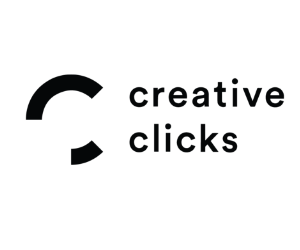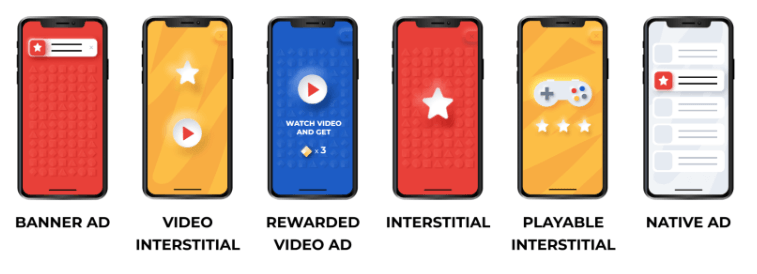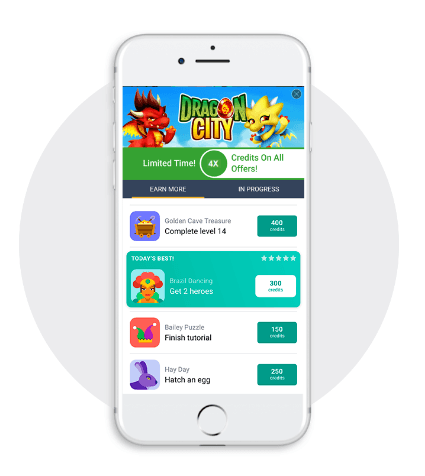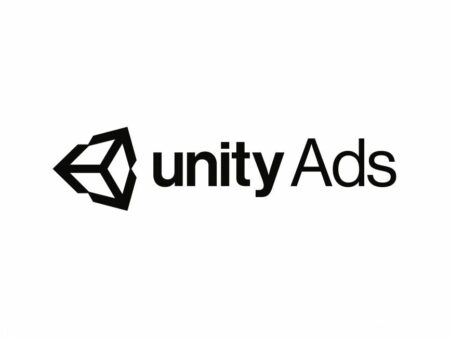Mobile game monetization companies can help you generate high revenues. So, in this guide, we’ll share an outline of different game monetization models to help you identify which companies to work with.
The ecosystem for game app monetization generates 90 billion USD globally. And this includes in-game purchases, in-game advertising, UGC, and meta-layer monetization.
Agencies and platforms can make it easier to run successful campaigns. And, to understand more, we’ll highlight the different approaches these companies can offer to support your gaming monetization plans.
What is mobile game monetization?
Mobile game monetization is a technique for generating revenue from gaming apps. It includes the standard pay-to-download model but also targets revenue from alternative streams.
Like mobile app monetization, mobile game monetization uses various models and strategies to generate revenue.
Current research shows half of all game developers use a pay-to-download model. But many other models offer more enhanced experiences and engaging gameplay for users that should be considered. Especially when they offer better flexibility for developers.
App Revenue Buyer's Guide
Download the App Revenue Buyer’s Guide today and start shaping the future of your app! Your journey towards app monetization mastery begins now.
What are some common mobile game monetization models?
So, what are the main game monetization models that developers are using to generate income?
Like IAA (In-App Advertising), in-game advertising is a popular route. But so are in-game purchases.
There are also niche gaming monetization strategies like Downloadable Content (DLC) and traditional subscription models to consider too.
In-game advertising
In-game ads show up within gameplay. They first emerged as blended in-game ads that appeared within gameplay in a non-intrusive way. They aren’t clickable but are useful for raising brand awareness or promoting new products.
In-game ads have evolved to include interactive ads, playable ads, and incentivized ads such as rewarded video ads. And we’ll touch on the specific types in an upcoming section.
In-game purchases
How do in-game purchases differ from in-game advertising?
Estimates suggest that 79% of gaming apps use the in-game purchase model to generate revenue. It’s a traditional revenue generation stream incorporating all transactions that happen inside an app. Types of in-game purchases include the following:
- Consumables: Extra lives or in-app currency like tokens are examples of consumables with an expiry point or one-time usage.
- Non-consumables: These are in-game purchases that often help to unlock new game levels or upgrade to new playable characters.
- Subscriptions: Freemium apps that offer monthly, weekly, or annual subscriptions are also classified as in-game or in-app purchases.
Subscription models
With the subscription model, gamers get the chance to download a free app. But later on, they will have to pay a subscription to access most of the in-game content, levels, or features. It’s a key model in mobile game monetization that can lead to higher revenue generation.
So, how can mobile game monetization companies help you use this model to boost revenue? Well, they should know the range of mobile game monetization and subscription models. And these include the following:
- Subscription-only model: Users download a subscription-only app but must pay for the subscription first.
- Auto-renewable subscription: The most common type of subscription app, this model ensures regular payment from users on an agreed term, e.g. weekly, monthly, or annually.
- Non-renewing subscription: Like the opposite of auto-renewable subscriptions, this framework means users pay for access or content for a closed or limited time.
- Cross-game subscription: Players pay a monthly subscription for access to the full suite of a platform’s games, not one. One example is Google Play Pass which offers access to over 600 games. It also includes no, no in-game purchases and no paywalls.
Sponsorships
Approaching a company to become a sponsor for your game, or other features, can be lucrative. Larger corporate sponsors may be looking for exposure to your target audience and core demographic.
With the right partnership in place, sponsors win by increasing exposure to new audiences while developers capitalize on their sponsors’ reputation and bring their audience over.
In-game sponsorship opportunities include branded gaming locations, items, special powers, or sponsoring additional games within the gaming app.
Paid games
Some audiences prefer to pay for a game app outright and avoid most of the in-app purchase opportunities in favor of smoother gameplay.
When potential users pay for a mobile game, they’ll expect more from it. They’ll want enjoyable and immersive gameplay and expect to get it from their game. The Paid model is often used by arcade-style games and some examples include Metal Gear Rising: Revengeance, Angry Birds, Castlevania, and Dead Cells.
Paid games can also blend in-app purchase opportunities on top, like offerwalls or rewarded ads. One example of this model is Pokemon Go which generates revenue of over $1bn USD every year.
How do you monetize mobile games?
Now that you know more about the main types of mobile game monetization models, how can you use them to monetize a mobile game? The key is to design mobile game monetization strategies that meet your objectives.
For instance, if your gaming app has the potential to show in-game ads without interrupting the user experience, and it becomes popular, you’ll attract the interest of advertisers and publishers.
When these advertisers see high viewing numbers for their ads they’ll pay more for continued exposure. Then, in time, publishers will come up with higher bids for getting their ads into your game.
In-game purchases, on the other hand, offer a direct revenue stream from your mobile game users. When users want to enhance gameplay or progress to a new level, they may agree to pay for such privileges. In-game subscriptions are also a form of in-game purchases and can feature within a gap in this way.
To show you the more popular and specific strategies you can use to generate high revenues from your gaming app, we’ll get into the details of some strategies below.
What are the best mobile game monetization strategies?
With a range of mobile game monetization models to play with, what options do developers have to make these strategies effective in generating revenue?
It’s possible to create mobile game monetization strategies that take a particular approach to user targeting while also mixing up a range of models and techniques. So let’s take a look at them here.
Hybrid game monetization strategy
Hybrid monetization combines in-game advertising with in-game purchases to maximize revenue generation potential. It makes the best of both worlds by giving mobile gamers the chance to spend money inside their game while also advertising to those who prefer free gameplay.
Blending these two approaches helps maximize LTV (lifetime value) and lets developers earn money from both in-game purchases and in-game ads. Various ad formats exist to support this approach and we’ll outline each of these formats in the section below.
It’s also worth noting that in-game purchases include subscriptions. This is where players receive a value exchange in the form of paying for extra in-game content for a fixed period. Subscriptions make up a critical third in the trinity of hybrid monetization. But they’re considered as both a stand-alone approach as well as a form of in-app purchases.
Hybrid monetization Trinity graphic

Source: Gameanalytics
Meta layer monetization
Mobile game developers are finding it harder to offer an element of surprise to their users in recent years. And a big reason is that users have seen the same trends come and go.
But one trend that offers an opportunity to boost creativity and engagement is meta-layer monetization. It’s the process of adding extra layers of playable in-game content that either supports or enhances gameplay while improving engagement.
Research by SensorTower found the most popular use of meta layers is character collection. And around 70% of the top-performing mobile games such as Honor of Kings and Genshin Impact use the meta layer of character collection.
User-generated content
User-generated content or UGC lets users enhance a gaming experience by designing their own levels, avatars, characters, maps, or stories.
A user who develops customized avatars, characters, or specific tokens can also sell their inventory creations to other gamers at a price. And that price can include a commission to developers in the form of microtransactions.
The following presentational video from Unity gives some insights into how to develop UGC for mobile games.
Video presentation on enabling UGC with Unity
Source: Unity
What are mobile game ad networks?
Mobile game ad networks are important in the ecosystem of mobile game advertising. They act as intermediaries that sell space within mobile games. And they track inventory in a game and sell it to advertisers–often other games–at a cost.
Mobile game ad networks facilitate the flow of inventory between Supply Side Platforms (SSP) and Demand Side Platforms (DSP). Doing so lets advertisers avoid contacting suppliers individually for each piece of available ad inventory.
You should bear in mind the wide range of features and services offered by mobile game ad networks:
- Ad formats: Each network specializes and offers different types of ad formats. We’ve gone into the details of each ad format in the section below.
- Markets covered: Different ad networks will operate in different geographic markets. So make sure the one you choose covers your chosen region e.g. US, Latin America, or Asia-Pacific.
- Traditional networks vs bidders: Not every mobile game ad network offers the same functionality as others. Some ad networks operate as programmatic auctions, which can save you time. Others take a more traditional approach.
- Compatibility: You’ll want to ensure your ad networks are compatible with your mediation platform.
- Level of customer support: Do you need some help and hand-holding in your campaigns? If so, consider reviewing the level of customer support on offer from the networks.
- Type of demand: You can choose from across three different types of mobile ad networks – performance, brand, or mix.
Types of in-game ad formats
There’s a variety of formats to choose from in mobile game advertising. Ad formats can be static, or dynamic and playable, depending on the intended approach.
So, let’s take a look at the key formats you should consider.
Examples of different mobile game advertising formats
Source: Appodeal
Interstitial ads
These types of ads interrupt gameplay or appear during breaks to catch player’s attention. Ads are usually full-screen and target CTRs and conversions. They’re also effective at increasing app install rates and showed the highest rates of in-app ad conversion at over 20% on Android.
Banner ads
Like interstitial ads, banners appear on the screen but only cover a section of it. They usually run from top to bottom or left to right as a ‘banner’. And these ads won’t interrupt gameplay but instead appear at the top or bottom of the screen.
They’re a form of display advertising and in-app advertising that work as static ads but also dynamic ads.
Native ads
Mobile gaming companies must pay third-party providers if they want to feature native ads within a game. Native ads look and feel like the content they inhabit. And in a mobile game, these types of ads would look like a seamless, natural part of gameplay.
Video Ads
This year we saw how mobile game advertisers introduced $7.8bn of fresh new ad creatives in the first quarter of 2023. Video-style ads accounted for 83% of all ad creatives and usually appear as full-screen interstitial ads.
Playable ads
Playable ads appear like video ads but with a distinct difference in letting users try out core functionality first. They’re free demos that let users ‘try before they buy’.
Rewarded video ads
These ads offer users a reward or incentive in return for viewing the ad. Rewards may include extra lives, in-game currency, but also monetary rewards.
The latest research shows that 44% of millennials and 41% of Gen X are likely to engage in rewarded ads and the most likely to out of all demographics.
Offerwall ads
Offerwalls show up on the screen with various options like prizes, benefits, or products that gamers can buy during gameplay. They can also exchange in-game currency for what appears on the offerwall.
Examples include signing up for a gaming subscription in return for in-game currency and making in-game purchases in return for accessing new levels of gameplay.
Example of an offerwall within a mobile gaming app
Source: Ironsource
What are the top mobile game monetization companies?
By now you should have a better sense of the different ways to engage in game app monetization and the types of models and strategies available. So how can you use this information to reach out to some of the best mobile game monetization companies for their input?
Since mobile game monetization is an exciting and fast-moving area of revenue generation and a critical part of the high revenue-generating mobile game marketing sector, you’ll want to optimize potential sales. And you can do this by reviewing the needs and wants of your target mobile game audience.
Will they want to see ads? Will the ads blend into gameplay? What’s worked with other types of mobile gaming apps?
Different genres have different approaches. For instance, if you’re launching a hyper-casual game you may want to make it free-to-play with a subscription service and regular paywalls on top. Arcade games will have different takes and bigger budgets.
Perhaps you know you have a great mobile gaming app already and are looking for better growth opportunities, to build your user base with new and innovative approaches to monetization. Or, like many apps, you’re seeing high early attrition rates post-download and wonder what other approaches you can take that may be better than a standard subscription model.
Whatever your needs or stage of app growth, you can find some of the best mobile game monetization companies in our directory. Reach out to them for advice, support, or a discussion and quote.


















